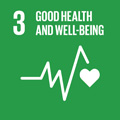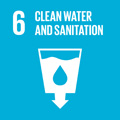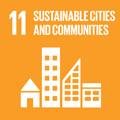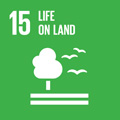- Docente: Filippo Piva
- Credits: 6
- SSD: ICAR/15
- Language: Italian
- Teaching Mode: In-person learning (entirely or partially)
- Campus: Bologna
- Corso: First cycle degree programme (L) in Sciences and Technologies for Green and Landscape (cod. 5830)
-
from Sep 16, 2025 to Dec 16, 2025
Learning outcomes
At the end of the course the student acquires the main tools of landscape design of green spaces inherent to the culture and methods of technical definition of the project, essential for the understanding of historical and contemporary works and for the development of his own design awareness also in relation to the elements of organization and management of the construction site phases. In particular, at the end of the course the student is able to evaluate the functions of green spaces in the urban landscape balance, the related design orientations and the compositional criteria for the design of green spaces (parks, gardens, play areas, sports areas, etc.), also in the context of participatory design processes. He is also able to independently understand and draw up the graphic works that make up the green project. The student acquires the reference elements for the progressive future development of a mature design awareness, accompanied by knowledge relating to legislation and professional ethics inherent to sector issues; develops the ability to relate on a cultural level and with specialists from other disciplines involved in planning.
Course contents
The course offers theoretical readings and a critical examination of examples relating to the design of parks and gardens, with particular in-depth analysis of the experiences and values (social, aesthetic, symbolic...) of the contemporary era, within the broader discipline of landscape architecture. This is for the purposes of forming a critical ability and design awareness inherent to the design of open spaces (private/public, garden and city scale). The course therefore aims to provide theoretical knowledge but at the same time to establish a design and experimentation laboratory, through ex-tempore and final synthesis exercises, on the theme of public space, the park and the garden, understood as places in dialectical and vital relationship with one's context: architecture, the contemporary city, its edges, the extra-urban territory.
Prerequisites
The student who accesses this teaching is in possession of a good preparation in the fundamentals of the history of landscape architecture, landscape ecology, territorial analysis and project representation. This knowledge and skills are provided by the courses provided during the first and second year of the course.
Teaching unit 1. Theoretical contents [24 hours]
This teaching unit provides the cultural tools necessary for the development of the exercise (teaching unit 2). The following topics will be analyzed and studied:
- Presentation of the course of the programme, main contents, objectives and methods;
- Knowing and reading a ‘place’, an ‘empty’ space (but full of sensitive elements): theories and methods of analysis and representation. Authors and examples;
- General criteria for the landscape project: balance of scale, coherence and synergy between the different elements that make up the open space project. Concepts, authors and projects;
- Compositional and technical aspects of the tree, shrub and herbaceous vegetation project. Authors and draft references;
- Compositional and technical aspects of soil design: topography and materials. Reference authors and projects;
- Reading and analysis of specific case studies at a national and international level in the field of landscape design.
Teaching unit 2. Design theme [36 hours]
Teaching unit 2 consists of the development of analysis activities and landscape project of a specific place, carried out in groups and structured as follows:
- Study inspections (field activities);
- Analysis and interpretation of the place (critical analysis), with particular reference to the following aspects: reading of the territory; mapping of the aspects characterizing the place; vegetation, soil and exposure; the relationships between solids and voids; spatiality and scale relationships; visual perception; other;
- The general project criteria: summary table, concept and masterplan;
- The development of the design solution;
- The technical report of the project.
The development of the project theme will be organized in steps that will develop, in the main contents, during the laboratory moments.
The choice of location, which will be communicated on the first day of the lesson, is made in synergy with the Imola Administration in such a way as to work on a concrete case and with a “client” who will dictate the guidelines for the development of the topic.
Readings/Bibliography
General reference bibliography/sythography of mandatory consultation (texts that can be consulted in the Plesso Vespignani library and/or online):
- Corajoud M., ‘Les neuf conduits nécessaires pour une propedéutique pour un apprentissage du project sur le paysge’ (‘To the students of the schools of lanscape-architecture’), in http://corajoudmichel.nerim.net/10-textes/elements-des-9-conduites/00neuf-cond-vignettes.html
- La Convenzione Europea del Paesaggio. Firenze, 2000, in http://www.convenzioneeuropeapaesaggio.beniculturali.it/index.php?id=1&lang=it
- Cortesi I., Il parco pubblico. Paesaggi 1985-2000. Federico Motta, Milano 2000
- Clement G., Il giardino in movimento. Quodlibet, Macerata 2011
- Rocca A., a cura di, Gilles Clément. Nove giardini planetari. 22Publishing, Milano 2007
- Clement G., Il manifesto del terzo paesaggio. Quodlibet, Macerata 2005
- Atelier Le Balto, Pasquali M., a cura di, Archipel. L’arte di fare giardini. Bollati Boringhieri, Torino 2008
- Latini L., Cunico M., a cura di, Pietro Porcinai. Il progetto del paesaggio nel XX secolo. Marsilio, Venezia 2012
- Oudolf P., Kingsbury N., Landscape in landscale. The Monacelli Press, New York 2010
- Panzini F., a cura di, Prati urbani. I prati collettivi del paesaggio della città. Fondazione Benetton Studi Ricerche-Antiga Edizioni, Treviso 2018
- “Abbandoni. Il paesaggio e la pienezza del vuoto”. Giornate internazionali di studio sul paesaggio 2022, XVIII edizione. video recording in: https://www.fbsr.it/paesaggio/giornate-di-studio/abbandoni/
- “Suolo come paesaggio”. Giornate internazionali di studio sul paesaggio 2020, XVI edizione. Videoregistrazione in: http://www.fbsr.it/paesaggio/giornate-di-studio/suolo-come-paesaggio/
- “Prati, commons”. Giornate internazionali di studio sul paesaggio 2017, XIII edizione. Videoregistrazione in: http://www.fbsr.it/paesaggio/giornate-di-studio/prati-commons/
- “Sul ritorno del bosco”. Giornate internazionali di studio sul paesaggio 2016, XII edizione. Videoregistrazione in: http://www.fbsr.it/paesaggio/giornate-di-studio/sul-ritorno-del-bosco/
- SLA architects, Why we love trees. In https://issuu.com/sla_architects/docs/why_we_love_trees
- SLA architects e altri, Climate adaptation & urban nature. Development catalogue. In https://issuu.com/sla_architects/docs/bynatur_booklet_uk_small
- Paisea magazine free download in https://www.paisea.com/
To choose the vegetation, refer to the numerous books in the library of the Plesso Vespignani in Imola.
Further texts and/or in-depth articles will be suggested during the course and made available in ‘Virtual’ scanned.
The individual lessons, which are considered an integral part of the bibliography of fundamental consultation, will also be made available in the form of a handout from the beginning of the course.
For topics related to landscape project representation techniques, refer to the course bibliography “Digital representation of the landscape project” which can be consulted in the course program itself. Consultation of this bibliography is considered fundamental for the correct representation of the project.
For further information on the history of the landscape, refer to:
- Daini M., Una storia tante storie. Dai giardini di Babilonia al bosco verticale. Ed. Il Nuovo Diario Messaggero, Imola 2020
- Panzini F., Progettare la natura. Architettura del Paesaggio e dei giardini dalle origini all'epoca contemporanea. Zanichelli, Bologna 2005
- Mosser, M., Teyssot, G., L'architettura dei giardini d'Occidente. Dal Rinascimento al Novecento, Electa, Milano 1990
- Panzini, F., Per i piaceri del popolo. L'evoluzione del giardino pubblico in Europa dalle origini al XX secolo. Zanichelli, Bologna 1993
Teaching methods
The course is divided into two teaching units: the first consists of frontal lessons relating to the contents of the course and the second involves design laboratory activities or the carrying out of landscape analysis and project exercises, with individual, collective and public reviews (in such a way as to make the review a moment of collective discussion for the whole class) of the ongoing work. The lectures and the moments of development of the project theme (workshops and reviews) will be continuously alternated during the course.
During the first lesson, the complete program of the course will be presented, with the lineup of theoretical lessons, laboratory moments and public reviews; the general program will be put online in ‘Virtual’ to also facilitate working/non-attending students who will therefore be able to evaluate, well in advance, whether to be present for some lessons on time. Furthermore, all the diagrams/handouts of each individual lesson, including specific bibliographies, will be made available to students online from the beginning of the course.
Working/non-attending students must still contact the teacher at the beginning of the course.
The course is a very dynamic course for which students will be encouraged on several occasions to make small interventions in order to develop the ability to present their project orally and any small insights.
Assessment methods
Teaching is part of the Integrated Course “Landscape architecture and healthy cities”, together with teaching “Green and health”; therefore the evaluation of the integrated course jointly takes into account the level of knowledge and skills acquired by the student regarding the contents of all the aforementioned courses.
The knowledge and skills imparted by this course are evaluated according to the following methods:
Test 1 (in groups of maximum 3 students).
Theme: design exercise. Presentation of the graphic documents in an adequate number to an exhaustive description of the landscape project assigned at the beginning of the course, from the territorial reading and critical analysis to the definition of the project; the technical report of the project will also be requested and the oral ability to present the work carried out, in its entirety, will be assessed.
Test 2 (individual).
Theme: oral verification of the theoretical contents presented during the course.
To pass Test 1, the topic will be provided and explained at the beginning of the course by the teacher. The papers requested vary from year to year depending on the complexity of the project whose elaboration is requested; the materials to be developed by the groups refer to what is described in the point ‘Programme/Contents - Teaching unit 2: Project theme’.
The documents required for the representation of the project proposal will approximately be: plans and sections in different scales (from territorial to detailed), three-dimensional views with different techniques (axonometries, perspectives, images and their reworking, photomontages, collages, etc.), design references, details, sketches, schemes, diagrams, legends, short texts, report. This exercise will be evaluated during the exam and the complete PDF must be sent away badly to the teacher approximately 5 days before the exam date.
It should be noted that the study of the design theme (Trial 1) must be developed using digital techniques. It is possible to insert sketches and hand drawings only if scanned and inserted consistently into the general layout of the work.
The exam is an oral test in which the student presents the project developed during the course (test 1) and is questioned about the theoretical contents (test 2, two/three questions per student). The overall length of the examination depends on the number of students per group.
All the explanation materials for the correct development of the individual tests, both design (test 1) and theoretical (test 2), will be made available to students from the first lesson in such a way that working/non-attending students also have all the information to correctly carry out the course program. In this regard, it is underlined that working/non-attending students will have to present themselves for the exam in the same way as attending students, carrying out all the tests individually. However, these students are asked to contact the teacher at the beginning of the course.
Please also remember that online registration for the exam is mandatory for all students, under penalty of exclusion from the exam.
Teaching tools
PC and video projector for lectures.
The frontal teaching activities carried out by the teacher will take place through the projection and discussion of graphic, photographic materials and texts.
The application activities will be carried out by the students with digital techniques, according to the specific indications of the teacher.
Office hours
See the website of Filippo Piva
SDGs




This teaching activity contributes to the achievement of the Sustainable Development Goals of the UN 2030 Agenda.
